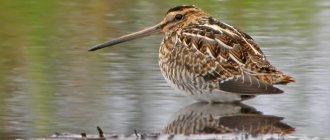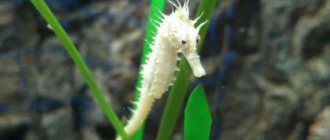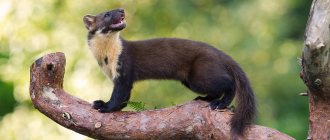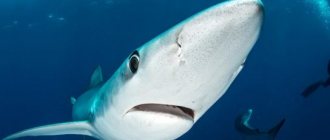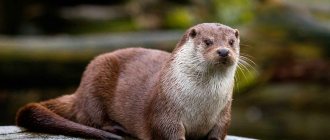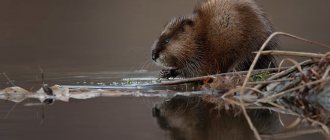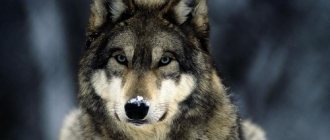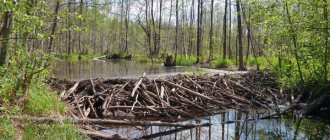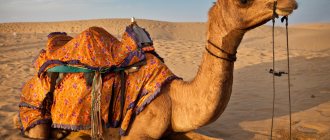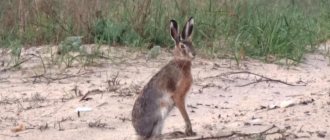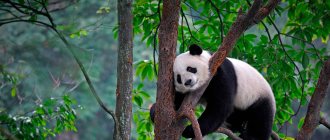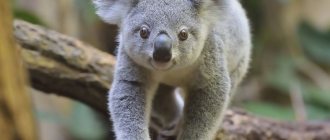- September 1, 2018
- Man in the wild
- Sergey Prots
The coyote (photo and description of the animal is given in the article) is a species of the genus of wolves of the canine family of the New World. He is smaller and weaker than a wolf. It occupies the same ecological niche as the jackal in Eurasia, although it is larger and more aggressive. The name of the animal comes from the Aztec name "coyotl". There are 19 subspecies. The coyote appears in the myths of the Indians of North America as a cunning and mischievous animal.
Coyote: description of the animal
The height of Canis latrans at the withers is about 60 cm, length is 1-1.3 m, including a 30-40 cm tail, weight is 9-23 kg. The fur is long and coarse, usually gray above and whitish below, reddish on the legs and bushy on the tail with a black tip. What a coyote looks like can vary greatly depending on where it lives. There is significant regional variation in the size and color of the different subspecies. The largest specimens live in the northeastern United States and eastern Canada. Coyotes are generally smaller than gray wolves, but they have longer ears and a relatively larger skull.
Habitat
Coyotes are extremely adaptable and use a wide range of habitats, including forests, grasslands, prairies, deserts and swamps. Gray wolves usually push them out of their areas. Coyotes, due to their tolerance of human activity, are also found in suburban, agricultural and urban environments.
Coyotes are territorial. They mark their home range with urine and feces, and howls also indicate that the territory is occupied. The size of coyote territories varies depending on the habitat and also depends on the amount of food. However, the area of most territories is between 10 and 40 square kilometers.
Food and hunting
Coyotes are known for their nightly serenades and howls. These are mainly nocturnal animals. Coyotes (photo given in the article) hang their tail down when running (unlike wolves, which hold it horizontally) and are capable of reaching speeds of up to 64 km/h. Their tracks are more elongated and less rounded than those of dogs.
Coyotes are skilled hunters and have keen senses. In open areas they use vision, but to find prey in dense vegetation or forests they rely on smell and hearing. In the north of its habitat, the coyote hunts snowshoe hares and white-tailed deer. One individual is capable of killing an adult deer, especially in deep snow. The coyote tackles him to the ground, repeatedly biting his hind legs, and chokes him by squeezing his throat.
In autumn and early winter they often hunt in pairs or flocks. Success depends on the number of participants. Large packs usually hunt large animals, although they will capture and eat any prey they encounter. The coyote's diet consists of insects, snakes, grass and carrion. During times when prey is not available, or in places where it is difficult to find, they feed on wild berries and fruits. At the same time, coyotes can lose a lot of weight. In the Northeast, they are fatter in the winter, when deer are easier to catch.
Behavior
Coyotes are less likely to form packs than wolves. The hunt, which takes place around the den, is carried out individually, in pairs or in families, depending on the availability of prey. Coyotes are primarily crepuscular, but can sometimes be seen during the day.
Although coyotes are capable of digging their own dens, they often expand burrows taken from badgers and rabbits and use them as their dens. The dens are used year after year. There are several entrances leading to the den. Coyotes leave their shelters to defecate and urinate.
Photo: David Andersen
These canines are capable of running at speeds of up to 65 km/h and can jump up to 4 meters. Movement occurs along fixed routes or paths in the home territory.
Natural enemies
Coyotes are animals that compete with some other carnivores, especially in the Northeast, where they were previously absent. Lynx compete with them for the same food sources, which are hares and rabbits, and the success of each predator depends on natural conditions. Bobcats hunt better in deep snow, while coyotes outperform them in areas with less snow cover where movement is easier. The latter also compete with the red fox, which is killed upon meeting. For this reason, areas with high coyote densities have few red foxes. The predators themselves are sometimes attacked by larger animals such as wolves, cougars, black bears and grizzly bears. Coyote pups are attacked by eagles.
WHERE IS IT FOUND?
The coyote inhabits the area from the cold regions of Alaska to Costa Rica. One can admire the coyote's ability to adapt to its environment. Coyotes are more likely to settle on open plains and in areas covered with sparse bushes. In its natural environment, the coyote lives in a certain area; in less suitable areas it leads a nomadic lifestyle. The area is marked with urine and sound signals: barking and prolonged howling. Coyotes that live in the mountains usually move to the valleys for the winter.
Reproduction
Coyotes mate in January–March, and females typically have 4–7 pups within 58–65 days. Childbirth takes place in an underground lair, usually a badger hole. It is often located on slopes with good drainage (to avoid flooding during rainstorms) and where visibility allows for observation of the surrounding environment.
Puppies are born blind and helpless, but after 2-3 weeks they begin to crawl outside to play. Breastfeeding ends after 5 to 7 weeks, and both parents feed and care for the puppies until they are fully grown and independent, usually between 6 and 9 months of age. Young individuals begin independent life in the fall (coyotes usually lead a solitary lifestyle until they reach sexual maturity), but some older brothers and sisters remain to help raise younger offspring. Family groups may stay together and form flocks during the winter.
Lifespan
In captivity, coyotes can be up to 21 years old, but in the wild they live 6-8 years. The maximum known age is 14.5 years. Most deaths are caused by people. They kill for fur and to protect domestic or wild animals. Coyotes are often killed when struck by vehicles.
The most common natural causes of their death in the wild are infectious diseases such as mange, canine distemper and rabies. Mange is easy to identify, as affected individuals begin to lose hair on certain areas of the body, usually the tail and sides. They may eventually die after the cold weather sets in.
What does it eat?
The American meadow wolf is not picky when it comes to food. This animal is considered an omnivore, but the main diet is the meat of hares, rabbits, dogs, gophers and marmots. Any smaller animal, including birds, insects and various aquatic life, can become the main dish of a hungry animal. And since coyotes often live near cities and towns, they can also hunt domestic animals, although they do this infrequently.
Coyotes rarely attack people. But the landfills that accompany human settlements are very attractive to them.
Human interaction
The coyote is an intelligent animal, famous for its cunning and speed. It has long been persecuted for attacks on livestock and game. Until the middle of the twentieth century. many states paid money for killed coyotes. Individuals living near farms usually attack livestock, especially sheep. They can also damage the harvest of watermelons, melons and other crops. Near cities, coyotes have been known to kill and eat pets left outside overnight. There are several reports of attacks on humans, including at least one fatal case. However, such events are extremely rare and tend to occur in areas where coyotes have lost their fear of people (for example, near suburbs). They are generally fearful and avoid people, but tolerate human presence in parks and are regularly seen in cities such as Chicago and Los Angeles.
Implications for the Ecosystem
Coyotes help control certain agricultural pests such as rats, mice and other rodents. If populations of these small mammals are allowed to grow too large, it will lead to habitat degradation.
Photo: Dale Kiser
On the other hand, coyotes pose a threat to poultry, livestock and crops. Around farms, coyotes typically preyed on sheep and goats.
Vocalization
The coyote is called the most vocal of all North American mammals. Adults are capable of producing at least 11 types of vocalizations. These sounds are divided into categories: agonistic and anxious, greeting and contact.
Low-intensity barking is used as a threat or alarm signal and is usually heard in nearby areas, causing the pups to immediately retreat into their burrows. The growl is used as a threat signal over short distances, but can be heard from playing puppies and copulating pairs. Barking can be considered both a means of voice communication at a distance and an alarm signal. A barking howl performs a similar function.
A sign of submission is whining. Dominant individuals express their acceptance of this position by high-frequency howls. Greeting vocalizations include a low-frequency whine made by submissive coyotes, usually accompanied by a wagging tail. A group bark is heard when two or more pack members meet and may be the final act of an elaborate greeting ceremony. Single and group howls are used to establish contact with other coyotes. The first serves to determine the location of an individual that has strayed from the flock. A group howl is given in response to a single, group and bark.
Survival
At the beginning of the 21st century, the coyote population was larger than ever before in North America, a testament to their ability to adapt and thrive in human-modified landscapes. Despite constant hunting, baiting and other means of control, the population persists, and the future of this canine species seems secure. Indeed, biologists are more concerned about the excess rather than the shortage of these animals.
Coyotes interbreed easily with domestic dogs. Their offspring are called coydogs.
DISTRIBUTION AREA, NUMBER, PROTECTION
The coyote was originally found in Central and Western North America. Now, thanks to the mass destruction of wolves, its main food competitors, the coyote has gradually spread throughout North America. Now the coyote can be found in 49 US states, as far north as Canada and Alaska. The animal numbers more than a million individuals. People are trying in vain to destroy this species; coyotes show their tenacity.
